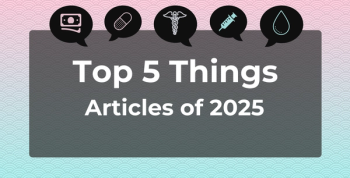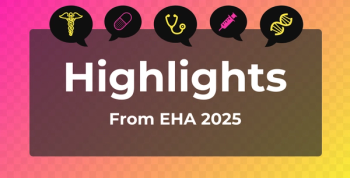
Global Study Warns of Rising PAH Burden
Key Takeaways
- PAH cases increased by 85.6% from 1990 to 2021, necessitating optimized public health strategies.
- Disparities in PAH incidence, mortality, and disability-adjusted life-years are influenced by socio-demographic indices.
The global burden of pulmonary arterial hypertension (PAH) remains great, with cases jumping 85.6% in 32 years.
The global impact of
“Despite notable advancements in diagnostic and therapeutic modalities in recent years,” the study authors wrote, “there remains a critical need for a deeper comprehension of the global disease burden of PAH to better understand its specific impact on public health.”
The data are telling. In 1990, all-age cases of PAH totaled 23,301 (95% UI, 19,037-27,809), but by 2021, this had risen to 43,251 (95% UI, 34,705-52,441) cases. Per 100,000 population, the corresponding ASIR rose from 0.5 (95% UI, 0.4-0.6) to 0.52 (95% UI, 0.42-0.62). Further, there were similar trends in ASMR. From 1990 to 2021, global deaths from PAH rose from 14,842 (95% UI, 12,370-17,485) to 22,021 (95% UI, 18,239-25,352); however, there was a drop in ASMR for this, from 0.35 (95% UI, 0.29-0.42) to 0.27 (95% UI, 0.23-0.32). By 2021, there were 642,104 disability-adjusted life-years (DALYs) due to PAH, which broke down to 8.24 (95% UI, 7.14-9.39) per 100,000 population and an estimated annual percentage change (EAPC) of –1.31 (95% CI, –1.43 to –1.19).
Disparities were evident when the authors considered socio-demographic index (SDI) at the regional level. For example, the greatest ASIR decrease—from 0.78 (95% UI, 0.64-0.93) to 0.71 (95% UI, 0.58-0.85) per 100,000, translating to EAPC of –0.03 (95% CI, −0.36% to −0.25%)—was seen in areas with the lowest SDI, while areas considered to have a high-middle SDI saw one of the highest increases: from an ASIR of 0.43 (95% UI, 0.35-0.52) to 0.46 (95% UI, 0.37-0.55), for an EAPC of 0.03 (95% CI, –0.05 to 0.12).
For mortality, middle-SDI regions had the highest ASMR per 100,000, at 0.33 (95% UI, 0.22-0.39), whereas high-SDI regions had an ASMR of 0.22 (95% UI, 0.19-0.23). The ASDRs in regions with a higher SDI reflected these results: in high-middle SDI regions, the ASDR was 9.3 (95% UI, 6.08-13.2) compared with 6.16 (95% UI, 5.76-6.49) in high-SDI regions.
Drilling down to more specific regions, sub-Saharan Africa demonstrated the highest incidence of PAH of 0.92 (95% UI, 0.75-1.09) per 100,000 population, while western sub-Saharan Africa had the greatest ASIR EAPC decline of –1.15 (95% UI, –1.27 to –1.02). However, between 1990 and 2021, the EAPC for ASMR from PAH rose the most in Central Asia (0.3; 95% UI, 0.06-0.53), while it decreased the most in Eastern Europe (–3.78; 95% UI, –4.18 to –3.37). Central Asia was the only region, the authors wrote, to demonstrate an increasing trend. In addition, the highest ASDRs were seen in North Africa and the Middle East (14.81 per 100,000; 95% UI, 10.76-17.95) and Central Asia (12.91 per 100,000; 95% UI, 10.61-15.60).
The authors also looked at the impact of such influences as age and sex, and they saw that regions with a lower SDI had especially high incidence rates in children younger than 5 years whereas there were more cases in adults 50 years and older in high- and high-middle SDI regions. By 2021, the mortality rates overall had improved for children younger than 5, but not so for adults older than 65 years, for whom mortality rates increased in high SDI regions.
Highlighting the power of their results, the present study authors note that although previous studies have attempted to quantify PAH trends, those analyses primarily focused on specific regions or countries.2,3 These, they caution, “may suffer from methodological limitations that compromise their precision,” while the GBD study’s approach “provides more comprehensive and accurate estimates of the disease burden.”
Their wider-reaching investigation was able to better show the persistent threat of PAH, that it remains a significant public health concern, and that interventions to head off the impact of PAH need to be tailored on the preventive and therapeutic fronts to better meet population-specific needs.
References
- Liu Z, Mo L, Cao W, et al. Global, regional, and national trends in pulmonary arterial hypertension burden, 1990–2021: findings from the global burden of disease study 2021. Front Public Health. 2025:13:1516365. doi:10.3389/fpubh.2025.1516365
- Humbert M, Sitbon O, Chaouat A, et al. Pulmonary arterial hypertension in France: results from a national registry. Am J Respir Crit Care Med. 2006;173(9):1023-1030. doi:10.1164/rccm.200510-1668OC
- McGoon MD, Benza RL, Escribano-Subias P, et al. Pulmonary arterial hypertension: epidemiology and registries. J Am Coll Cardiol. 2013;62(suppl 25):D51-D59. doi:10.1016/j.jacc.2013.10.023
Newsletter
Stay ahead of policy, cost, and value—subscribe to AJMC for expert insights at the intersection of clinical care and health economics.







































